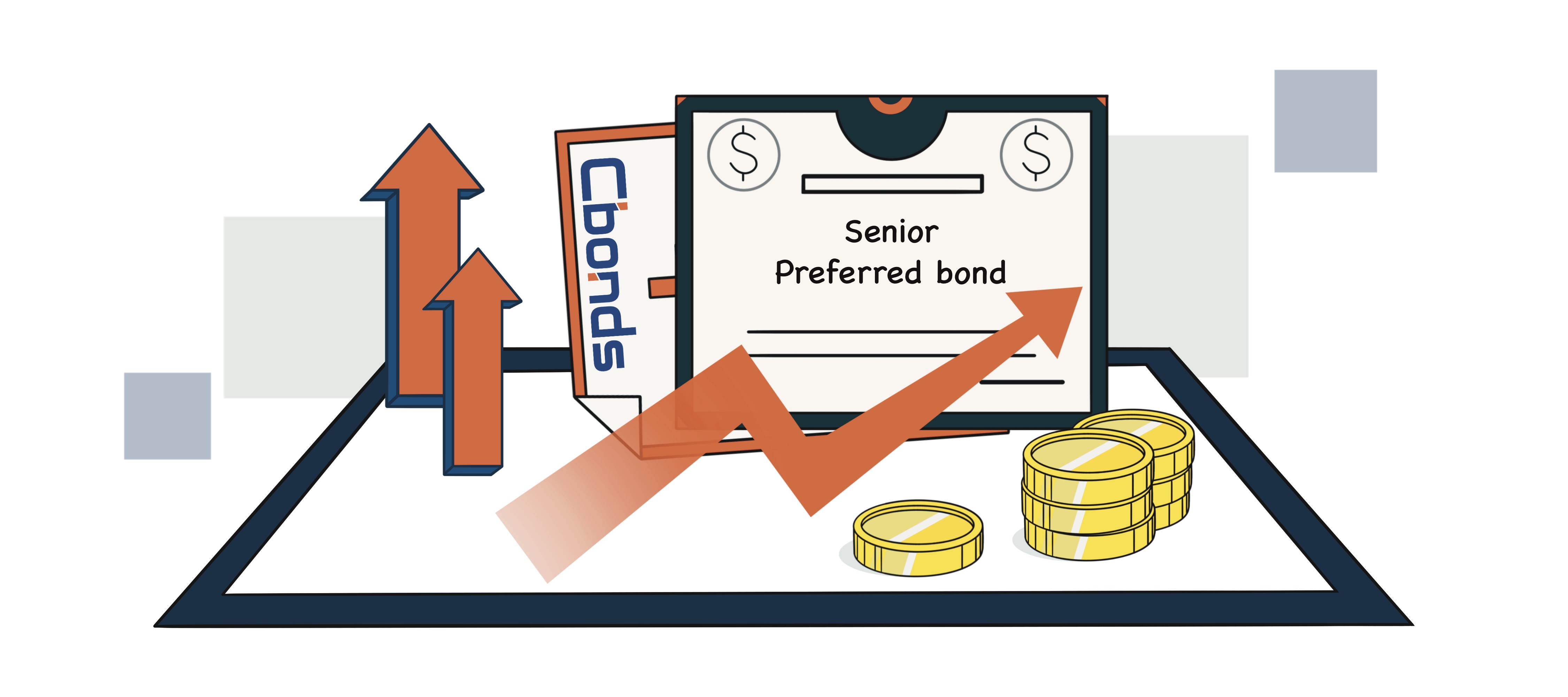By
Konstantin Vasilev Member of the Board of Directors of Cbonds, Ph.D. in Economics
Updated August 06, 2023
What are senior preferred bonds?
Senior Preferred bonds are a type of debt security available to banks. They were introduced as part of amendments to section 46f of the German Banking Law on July 21, 2018.
The main characteristics of Senior Preferred bonds are as follows:
-
Fixed Principal and Interest. These bonds’ principal amounts and interest rates are known in advance, except in cases where there is indexation or a floating rate mechanism.
-
Minimum Repayment Period. These bonds have a minimum repayment period of at least one year.
-
Higher Rating. Generally, the rating of preferred bonds is higher than that of non-preferred bonds, indicating a lower risk level.
-
Direct and Unconditional Obligations. Senior Preferred notes represent the issuing bank’s direct, unconditional, and unsecured obligations.
An example of a senior preferred bond would be: BPCE, 2.74% 27sep2024, EUR

Security types of corporate bonds: Overview
-
Secured Corporate Bonds. Secured corporate bonds follow a ranking structure where the senior "secured" debt holds the highest priority. This type of bond is backed by collateral provided by the issuer, making it more secure in case of company default. Common examples are bonds supported by assets like industrial equipment, warehouses, or factories.
-
Senior Secured Bonds. In this ranking structure, any security labeled "senior" takes precedence over other sources of company capital. The most-senior securities holders receive the first payout in case of default, followed by those with the second-highest seniority, and so on, until the available assets are exhausted.
-
Senior Unsecured Bonds. Similar to senior secured bonds, senior unsecured corporate bonds hold a privileged position in the payout order. However, they lack specific collateral backing. Instead, their security relies solely on the issuer’s credit rating.
-
Junior, Subordinated Bonds. Junior, unsecured debt comes into play after senior securities are paid out. These bonds, known as debentures, lack collateral and are paid out only after senior bonds in the event of default.
-
Guaranteed and Insured Bonds. These bonds are guaranteed by a third party in case of default, offering an extra layer of security beyond collateral. Examples include municipal bonds backed by a government entity or corporate bonds guaranteed by a group entity. Although they are not fully insured, they are less risky than non-insured bonds, resulting in lower interest rates.
-
Convertible Bonds. Issuers of convertible bonds entice investors by offering bonds that can be converted into common stock shares. The conversion usually occurs at a predetermined price, even if the stock’s market price has increased since the bond’s issuance. Convertible bonds typically have a lower yield than standard bonds due to the additional options they offer investors, and their value is influenced by the company’s stock price and prospects at the time of issuance.
What are preferred securities?
Preferred securities, also known as "preferreds," are a type of fixed-income investment that exhibit characteristics similar to equity. They are primarily issued by prominent banks and insurance companies. These securities have unique features: they are perpetual and callable, usually providing dividends instead of traditional coupons. Moreover, they offer various rate structures and often hold investment-grade ratings. In the capital structure, they hold a subordinated position.
Traditional preferred securities can be categorized into two common types – retail and institutional.
Ranking in Liquidation/Bankruptcy
-
Senior Non-Preferred Bonds. In case of liquidation or bankruptcy of a company, Senior Non-Preferred Bond is ranked higher than Subordinated Bonds but remains inferior to Senior Preferred Bonds or Senior Unsecured Debt. This means that Senior Non-Preferred Bondholders have a higher priority for receiving payments from the company’s remaining assets than Subordinated Bondholders but are still lower in the hierarchy than Preferred Bondholders.
-
Preferred Bonds. Preferred Bonds are senior to both Senior Non-Preferred Bonds and Subordinated Bonds in the event of liquidation or bankruptcy. They have a higher priority for receiving payments from the company’s remaining assets compared to both these other types of bonds.
"Bail-In" Procedure.
-
Senior Non-Preferred Bonds. These bonds come with an intrinsic "bail-in" procedure. If the issuing company is on the verge of bankruptcy, creditors holding Senior Non-Preferred Bonds may be subject to a conversion of their bonds into shares. If the value of these shares rises over time, the bondholders have the opportunity to recover their invested capital.
-
Preferred Bonds. Preferred Bonds do not have a built-in "bail-in" procedure. Their terms and conditions do not include automatic conversion into shares in case of financial distress.
Regulatory Treatment.
-
Senior Non-Preferred Bonds. These bonds are subject to the rules of MREL (Minimum Requirements for Own Funds and Eligible Liabilities) or TLAC (Total Loss-Absorbing Capacity). These regulations set minimum requirements for the amount of loss-absorbing capital a bank must hold to protect against potential losses.
-
Preferred Bonds. Preferred Bonds are not subject to MREL or TLAC rules. Their regulatory treatment may differ as they are senior to Senior Non-Preferred Bonds.
Bond Screener
Watchlist
Excel add-in
API











